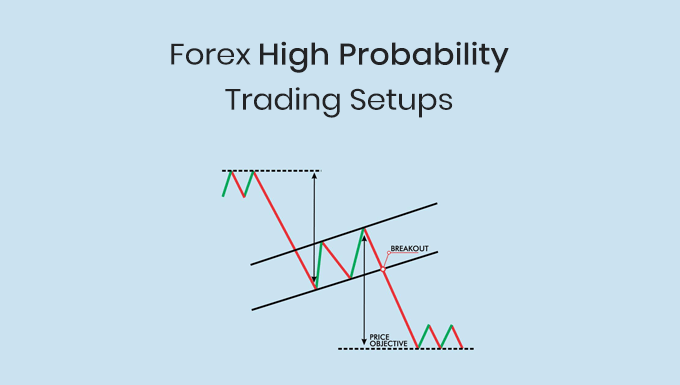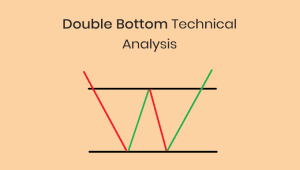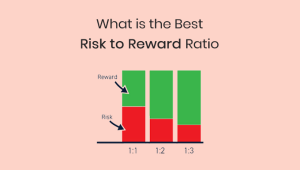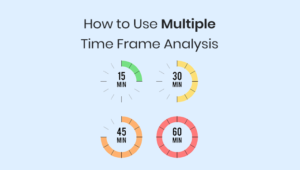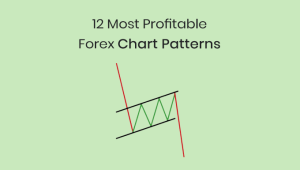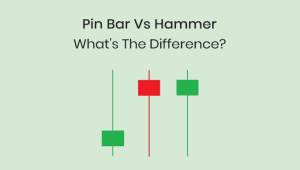The Foreign Exchange (Forex) market offers a great deal of opportunities for traders worldwide. However, to extract consistent profits, traders must be able to spot patterns and identify high probability trading setups. These are specific patterns or conditions in the market that offer a greater likelihood of realizing a profit. In this article, we discuss the most popular forex high probability trading setups every trader should be aware of.
Table of Contents
• Trend Continuation Setups
• Breakout Trading Setups
• Reversal Setups
• Using Support and Resistance Levels
• The Role of Volume
• Conclusion
• FAQs
Defining High Probability Trading: What Makes a Setup “High Probability”?
Trading, at its core, involves making decisions based on probability. However, not all setups are created equal. A high probability trading setup is characterized by a higher chance of playing out in the trader’s favor. The term ‘high probability’ doesn’t guarantee success but indicates a favorable risk-to-reward ratio.
Traders often mix up ‘probability’ with ‘certainty’. In trading, nothing is certain. A high probability setup, therefore, means that historically and statistically, such a setup has often resulted in a particular outcome. However, the past doesn’t always define the future, so it’s essential to keep this distinction in mind.
Technical analysis plays a key role in spotting these setups. Through analyzing past market data, mainly price and volume, traders can anticipate future price movements. The importance of a good trading strategy can’t be stressed enough, as it can help filter out noise, reduce the risk of emotional trading, and increase the odds of success.
High probability trading, when combined with solid risk management techniques, can significantly enhance a trader’s chances of being consistently profitable. While high probability setups can guide, it’s also essential to understand that no setup is foolproof. Hence, managing risk becomes very important.
Trend Continuation Setups and Their Key Indicators
When it comes to trading, the adage “the trend is your friend” is particularly poignant. Trend continuation setups are based on the premise that once a currency pair starts moving in a particular direction, it’s more likely to continue in that direction than to move against it.
Several key indicators can assist traders in identifying and capitalizing on trend continuation setups. An indicator like Moving Averages can be especially effective in the Forex market. For instance, the 200-day moving average is closely watched in pairs like EUR/USD or USD/JPY. A pair trading above this average might indicate a long-term uptrend.
Another critical indicator for trend traders is the MACD (Moving Average Convergence Divergence). This momentum oscillator can help traders identify when a currency pair’s momentum is strengthening or weakening, thus providing cues about potential continuation or reversal.
The Relative Strength Index (RSI) is another momentum oscillator that measures the speed and change of price movements. An RSI above 70 typically indicates that an price might be overbought, while an RSI below 30 might signify that it’s oversold. However, in strong trends, currency prices can remain overbought or oversold for extended periods.
Forex traders also employ tools like the MACD or the RSI to gauge the momentum behind a currency pair’s move. Spotting divergences between these indicators and price can be a powerful signal of potential continuation or reversal.
Breakout Trading: Identifying and Capitalizing on Momentum
Breakouts occur when the price moves outside a specific range or pattern, indicating the potential beginning or continuation of a trend. This form of trading is attractive as it allows traders to enter a position early in a trend and capitalize on the subsequent momentum.
For a breakout to be valid, it needs to be accompanied by significant volume. A spike in volume indicates strong interest from traders and can validate the breakout’s authenticity. Without sufficient volume, a breakout might just be a false move, luring traders into a trap.
Chart patterns such as triangles, rectangles, and wedges often indicate breakouts. Traders need to draw trendlines connecting the highs and lows of these patterns and then watch for a decisive break. The key is to wait for confirmation rather than anticipating the breakout, as preemptive moves can often lead to fakeouts. Waiting for confirmation, such as a closing candle outside the range or increasing volume, can increase the odds of successful breakout trading.
Breakouts can also occur from key support or resistance levels. Once these levels are breached, they often switch roles. That is, a broken resistance might act as a new support and vice versa.
Reversal Setups: Reading the Signs and Making the Shift
Reversal setups indicate a potential change in the currency pair’s prevailing trend. These high probability trading setups can be incredibly lucrative, as they allow traders to capture significant price movements from the beginning. However, they come with a degree of risk, as false reversals can lead to losses.
Various candlestick patterns signal potential reversals. The bullish engulfing, bearish engulfing, hammer, and shooting star are just a few examples. These patterns, when occurring at key support or resistance levels, can be particularly potent.
Divergences between price and momentum oscillators like the RSI or MACD can also signal potential reversals. For instance, when the price makes a new high, but the RSI fails to do so, it indicates weakening momentum and a potential bearish reversal.
Head and Shoulders and Double Top/Bottom patterns are classical chart patterns that signal reversals. Their strength lies in the clear levels they provide for entry, stop loss, and take profit.
While reversal setups can be tempting, it’s crucial to wait for confirmation. A single candlestick pattern or divergence might not be enough. Combining different tools and waiting for the price to confirm the reversal can increase the odds of success.
Using Support and Resistance Levels to Predict High Probability Trades
Support and resistance levels are horizontal levels on a chart where the price has historically faced buying or selling pressure. Understanding and plotting these levels can significantly enhance the probability of a trade.
Support levels represent areas where buying interest is significantly strong and surpasses the selling pressure. Conversely, resistance levels indicate zones where selling interest overpowers buying pressure. These levels are crucial as the price often bounces off them or faces difficulty surpassing them.
The more frequently a level is tested, the stronger it becomes. Once a resistance level is breached, it often turns into a support level and vice versa. This role reversal provides traders with valuable information about potential entry and exit points.
Incorporating volume can add another layer of reliability. If the price approaches a support level with decreasing volume, it’s an indication of a potential bounce. On the flip side, if a resistance level is approached with increasing volume, it might signal an impending breakout.
Traders should be wary of false breakouts or breakdowns and always incorporate other technical tools to validate their observations.
The Role of Volume in Gauging Market Participants’ Commitment
Volume represents the number of ticks traded over a specific timeframe and is a significant indicator of the strength behind price movements. High probability setups often have the backing of significant volume, as it confirms the commitment of traders to the prevailing price action.
Volume analysis in Forex is slightly different than in stock markets due to its decentralized nature. Instead of absolute volume figures, Forex traders rely on tick volume, representing the number of price changes in a given timeframe.
While not a direct representation of volume, tick volume can still provide insights. Increasing tick volume during a trend can signify strong participation, while decreasing tick volume might indicate a potential reversal or consolidation.
Divergences between price and volume can signal potential reversals or weakening trends. If the price is making new highs but volume is declining, it might be a sign that the uptrend is running out of steam.
Volume indicators like the On Balance Volume (OBV) can also provide insights into the cumulative flow of tick volume, helping traders gauge the strength behind a currency pair’s move.
Conclusion
Understanding and identifying high probability trading setups is an essential skill for any trader looking to achieve consistent profitability. By combining technical analysis, volume analysis, and effective risk management, traders can navigate the complexities of the financial markets and harness the power of high probability setups. While these setups offer a roadmap, it’s essential to remember that no strategy guarantees success every time. Continual learning, adaptation, and good risk management are the keys to long-term success in Forex trading.
FAQs
1. How do I identify the strength of a trend in the Forex market?
While the main article discussed various high probability setups, the strength of a trend can be determined using various indicators. The Average True Range (ATR), Relative Strength Index (RSI), and Moving Averages can provide insights. A combination of high volume and steep, sustained price movement also signifies a strong trend.
2. What’s the difference between a setup and a trigger in Forex trading?
A setup provides the context or precondition for a potential trade, like those discussed above. A trigger is the specific event or condition that initiates the trade. For example, spotting a Pin Bar at a support level is a setup, while the price moving above the high of the Pin Bar might be your trigger to buy.
3. How important is risk management in high probability trading setups?
Risk management is crucial. Even with high probability setups, not all trades will be winners. Traders need to predetermine their stop-loss and take-profit levels and decide on the portion of their capital they are willing to risk on each trade.
4. Do high probability setups work in all market conditions?
No. Like all trading strategies, the effectiveness of high probability setups can vary depending on market conditions. For example, during times of high volatility or major news events, traditional setups might not hold as effectively.
5. How can I backtest these high probability trading setups?
Backtesting involves testing a strategy on past market data. Most trading platforms offer backtesting tools. To backtest, one would program the specific criteria of the setup and then run the strategy on historical data to see how it would have performed.
